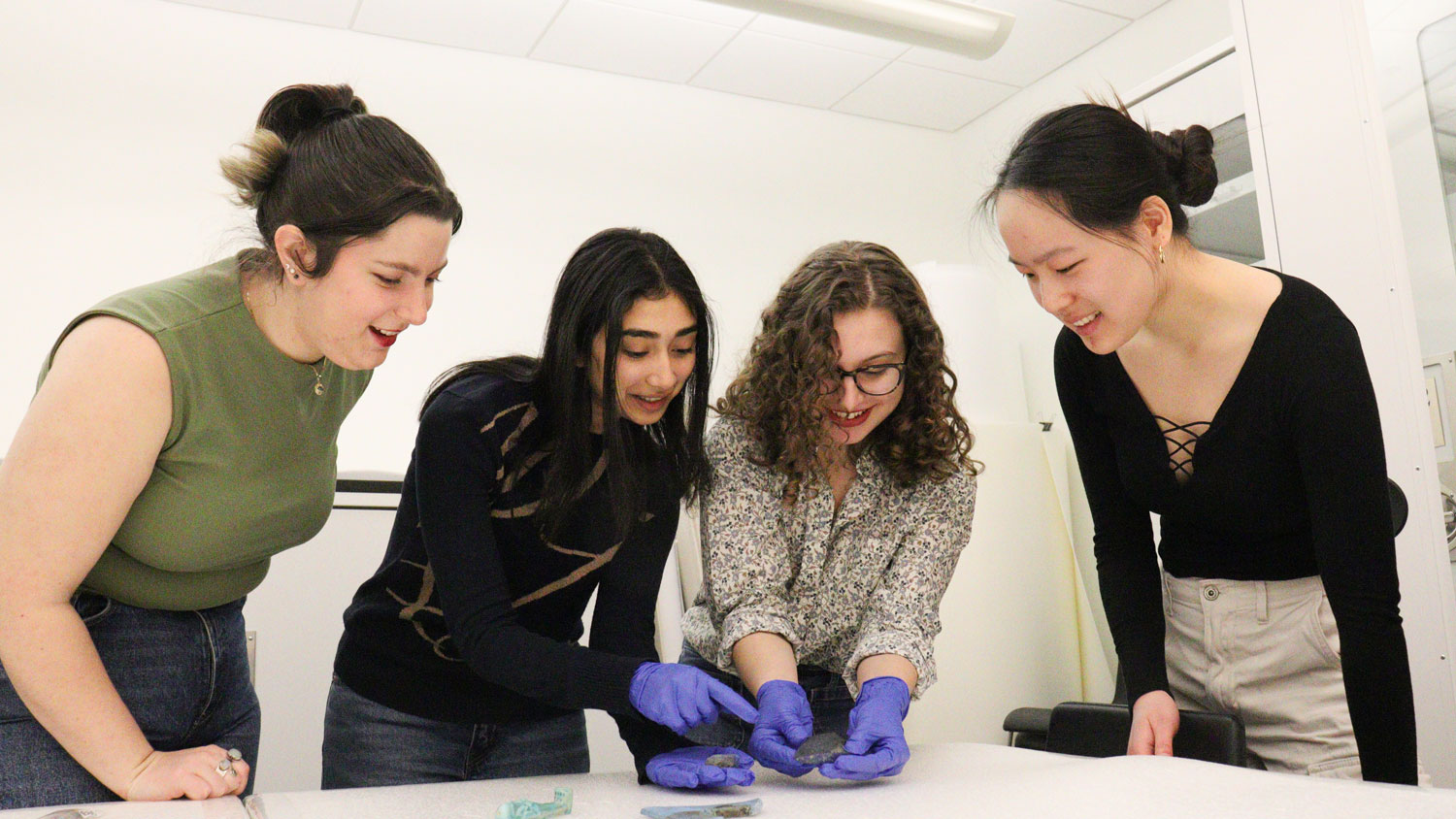Penn Museum’s Student Exhibition Examines Ancient Pops of Color with Into the Blue, Opens March 29

High-resolution images are available for download here.
PHILADELPHIA, February 18, 2025 — A new exhibition curated by undergraduate students from the University of Pennsylvania explores the deep human history associated with a popular hue that has stood the test of time—Into the Blue: The Pursuit of a Color opens Saturday, March 29, 2025 at the Penn Museum.
Unlike today, blue was not easy to produce nor acquire in the ancient past. The relentless pursuit of blue for use in textiles and art has led to the development of ingenious methods in producing this rare, highly prized color that holds significant meaning for diverse cultures around the world throughout history
Into the Blue spans 4,000 years—displaying 20 objects from across the Penn Museum’s collections, including select artifacts from the Middle East, China, Africa, ancient Egypt, and Central America.
The exhibition examines three themes: Obtaining Blue, Making Blue, and Synthesizing Blue.
Obtaining Blue highlights the mining and transportation of lapis lazuli, a semi-precious gemstone used in decorative and ceremonial objects in the Middle East—along with the trapping of kingfishers, brightly colored birds whose feathers were used to decorate articles of adornment in China.
A senior History of Art major, Talia Desai from Bethesda, is one of the exhibition’s four student curators enrolled in Penn’s School of Arts and Sciences. One of the striking artifacts in Into the Blue is an enamel hairpin that parallels the blue found in kingfisher feathers, Desai says.
“The imitation of the feathered pins reveals the desire for the bright blue color that comes from something natural, like feathers,” Desai explains. “The creation of this synthetic blue is reminiscent of blues produced all over today that try to replicate more natural blues.”
Making Blue showcases the West African tradition of indigo dyeing through stories of its cultural value and production—with demonstrations of the dye process and drastic color changes.
Growing up in Philadelphia, Iris Peron-Ames loved spending time at the Penn Museum. Today, as a junior majoring in Ancient History and History of Art, she says curating this exhibition was a way to recreate the wonder and fun she remembers experiencing here—for today’s visitors. One object in the exhibition that Peron-Ames has connected with is a Maya effigy cup.
“Embedded within its history is adapting indigo dye into a pigment for painting and the development of Maya blue,” Peron-Ames says. “It shows the power of human desire and innovation as well as the impact of blue as a colorant.”
Another object highlighted in Making Blue—a piece of Egyptian blue pigment—has influenced student curator April Zhang, a junior Design major from San Jose, California. Egyptian blue is one of the earliest examples of an artificially produced color. The pigment begins as a mix of raw materials, only becoming blue through a complex firing process.
“It carries such energy as an artifact in the middle of the color production process. Something unfinished is less often shown in exhibits,” Zhang explains. “It tells us the story of how Egyptian blue was created, hopefully inspiring visitors to think about colors in a new way.”
Synthesizing Blue covers the ongoing quest for the “perfect blue,” outlining the connections between its modern and ancient shades. This section of the exhibition will include a wall mounted interactive touchscreen for visitors to uncover the many ways that modern blues are created for use in art, industry, and fashion today.
Blue continues to resonate with people across time and place, adds student curator Nadia McGrath, a senior from San Francisco majoring in Visual Studies and Communication.
“Blue has a rich history and innovative processes behind, demonstrating that people desired and loved blue in the ancient past just as much as we do today,” says McGrath, who is intrigued by a statue of Imsety, the son of Horus. For the ancient Egyptians, blue was linked to ideas of solar rebirth—with connections to the sky and primeval waters of creation.
Into the Blue will be on view through spring 2026 and is included with Penn Museum admission.
###
About the Penn Museum
The Penn Museum’s mission is to be a center for inquiry and the ongoing exploration of humanity for our University of Pennsylvania, regional, national, and global communities, following ethical standards and practices.
Through conducting research, stewarding collections, creating learning opportunities, sharing stories, and creating experiences that expand access to archaeology and anthropology, the Museum builds empathy and connections across diverse cultures
The Penn Museum is open Tuesday-Sunday, 10:00 am-5:00 pm. It is open until 8:00 pm on first Wednesdays of the month. The Café is open Tuesday-Thursday, 9:00 am-3:00 pm and Friday and Saturday, 10:00 am-3:00 pm. On Sundays, the Café is open 10:30 am-2:30 pm. For information, visit penn.museum, call 215.898.4000, or follow @PennMuseum on social media.



